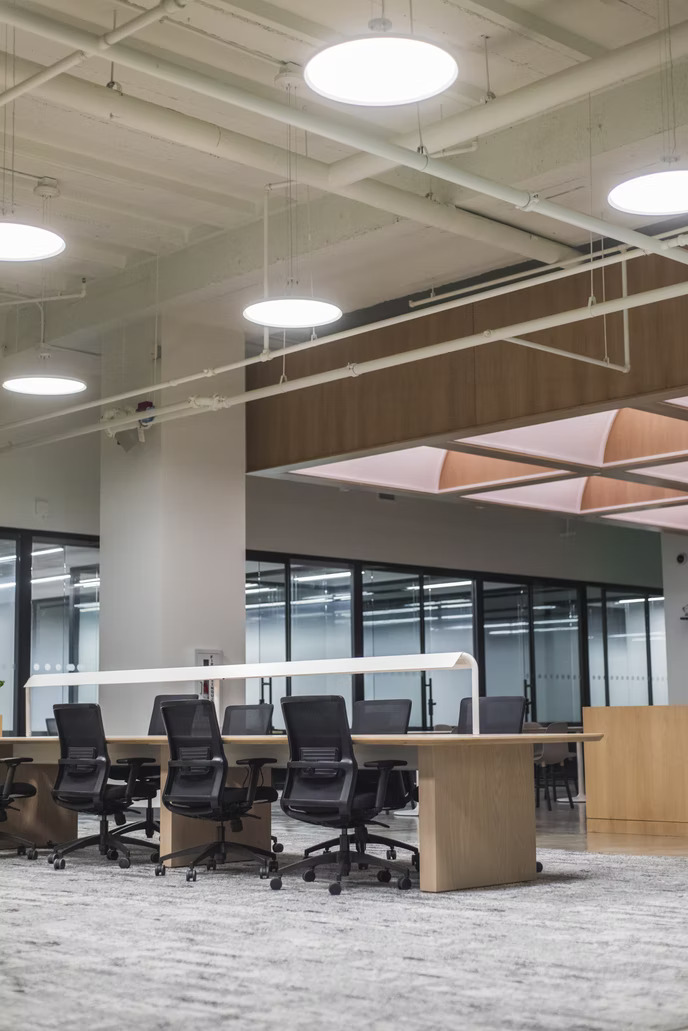Structural design and engineering with ICF blocks are perhaps the most troublesome challenge confronting the ICF business today. Time and again

The main aspects of office design include safety, comfort, security, and advanced technology, all while being eco-friendly. Flawless MEP design for office buildings is essential for optimizing these aspects. Moreover, the MEP design team must create detailed and sustainable drawings as well as satisfy all government regulations for the installation, maintenance, operation, and design of these systems.
In this article, we’ll look at various MEP design tips that will help to improve office building performance and create a comfortable indoor environment for humans. First, here’s what MEP design for offices is all about!

What’s MEP design for office spaces?
Typically, MEP (Mechanical, Electrical & Plumbing) design refers to different aspects of building design. It consists of maintaining, planning, and designing the building’s MEP systems as well as obtaining approval from the relevant local building department.
The main aim of MEP systems is to create a suitable indoor environment for the wellness of the occupants. However, they are also responsible for a considerable part of water and energy consumption in the building. Therefore, optimal installation and efficient HVAC design will significantly reduce the operating costs and resources, while maintaining the ideal environment for humans.
Importance of MEP design in office buildings
Various companies in different industry sectors require office spaces where their staff can process and collaborate on information. Each of these spaces requires an efficient MEP & HVAC design for the office to create an adequate work environment.
Here’s why every office space needs an MEP design;
4 MEP design tips that can help to improve office buildings
The local governments follow a set of building codes that are periodically updated and reviewed to regulate renovation and new construction projects. Also, there are additional building requirements that are published as local laws.
Normally, building codes are applied during the construction period. Therefore, you don’t have to upgrade your building with every recent code version. Contrarily, local law requirements apply to both existing and new buildings.
In most cases, non-compliance with local laws and building codes results in financial penalties and fines for the property owners. To avoid that, it’s important to fix the issue as soon as possible. Here, you should hire an MEP engineering firm to thoroughly inspect the office building to identify and propose the best solutions for the problems. Thereafter, the MEP design team will create MEP drawings that will; be approved by the local building department addressing solutions to the local law and building code violations.
Mep systems, especially HVAC equipment consume most of the energy in office buildings. Thankfully, a well-designed energy-efficient measure can help to reduce this consumption without impacting the building’s performance. This involves combining appropriate energy-efficient measures for an optimal outcome that will effectively enhance the building’s performance and Indoor air quality.
To identify the right combination of measures, MEP engineers have to undertake an energy audit first. This will help them analyze multiple design options and come up with the most appropriate configuration for the office building. In most cases, energy audits recommend HVAC equipment and LED lighting upgrades.
When it comes to indoor air quality and temperature, HVAC design for office spaces must balance energy consumption and building performance. Overheating, over-ventilation, and overcooling all indicate energy wastage.
Determining the ideal temperatures for an office space can be challenging. However, research suggests that human productivity usually peaks at 21 deg C (70 deg F). Also, you can come up with innovative concepts like creating zones across the office buildings to allow occupants to stay where they feel comfortable. Alternatively, you can provide HVAC controls for personal spaces. This will enable the occupants to set the ideal temperatures for their surrounding area.
Contrarily, indoor air quality needs a different design approach since reducing the level of airborne pollutants benefits everyone. Unfortunately, using air ventilation for offices indicates a waste of energy since it’s almost unfeasible to reduce the pollutant levels to zero. Therefore, the smarter approach when designing a ventilation system for offices is to keep the airborne pollutants below a reference level.
Energy bills for office buildings are usually higher than water bills. Nonetheless, it’s equally important to conserve both resources to minimize the environmental impact of the building. Besides, old office buildings usually consume more water because of deteriorated plumbing fixtures.
A simple and effective water conservation measure is to install plumbing fixtures with WaterSense labels from the United States Environmental Protection Agency. Such fixtures will help you reduce your water bill by at least 20%.
Final Word
MEP engineers should collaborate with other construction professionals to design healthy and productive office buildings. This will help to reduce operating costs for the property owner while improving profit margins and productivity. Besides, this will eliminate complaints associated with a poor MEP design for offices like insufficient lighting, unpleasant odors, thermal discomfort, glare, and stuffy air.
About Author
InnoDez